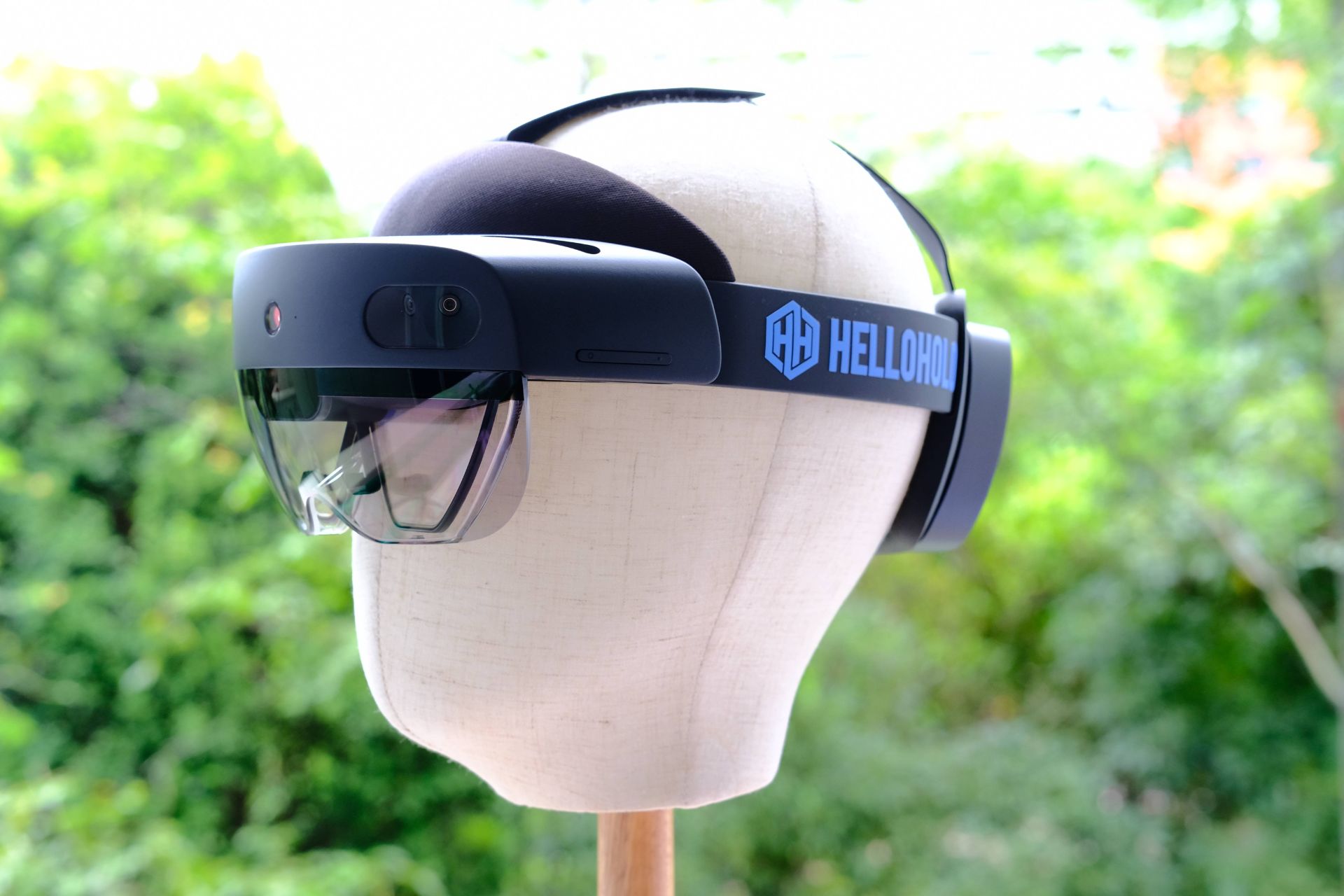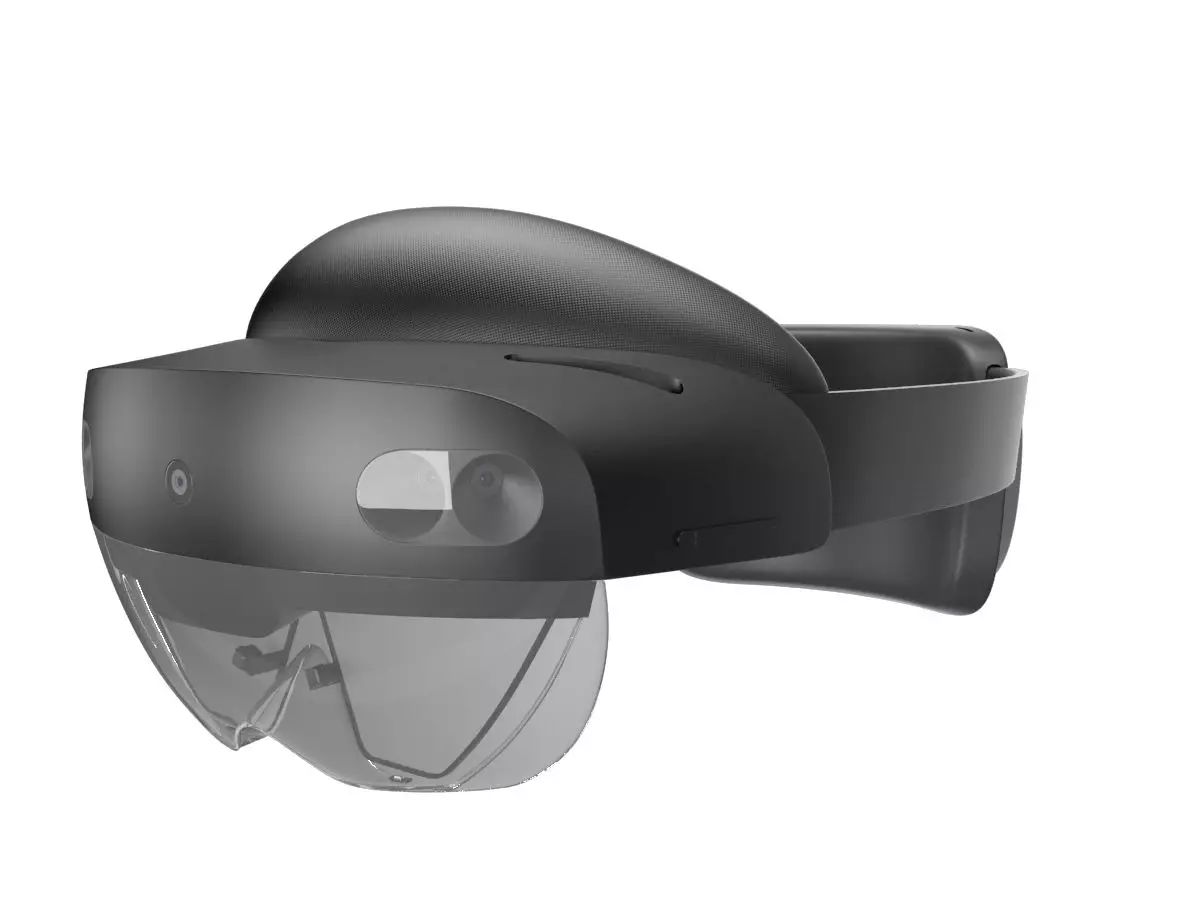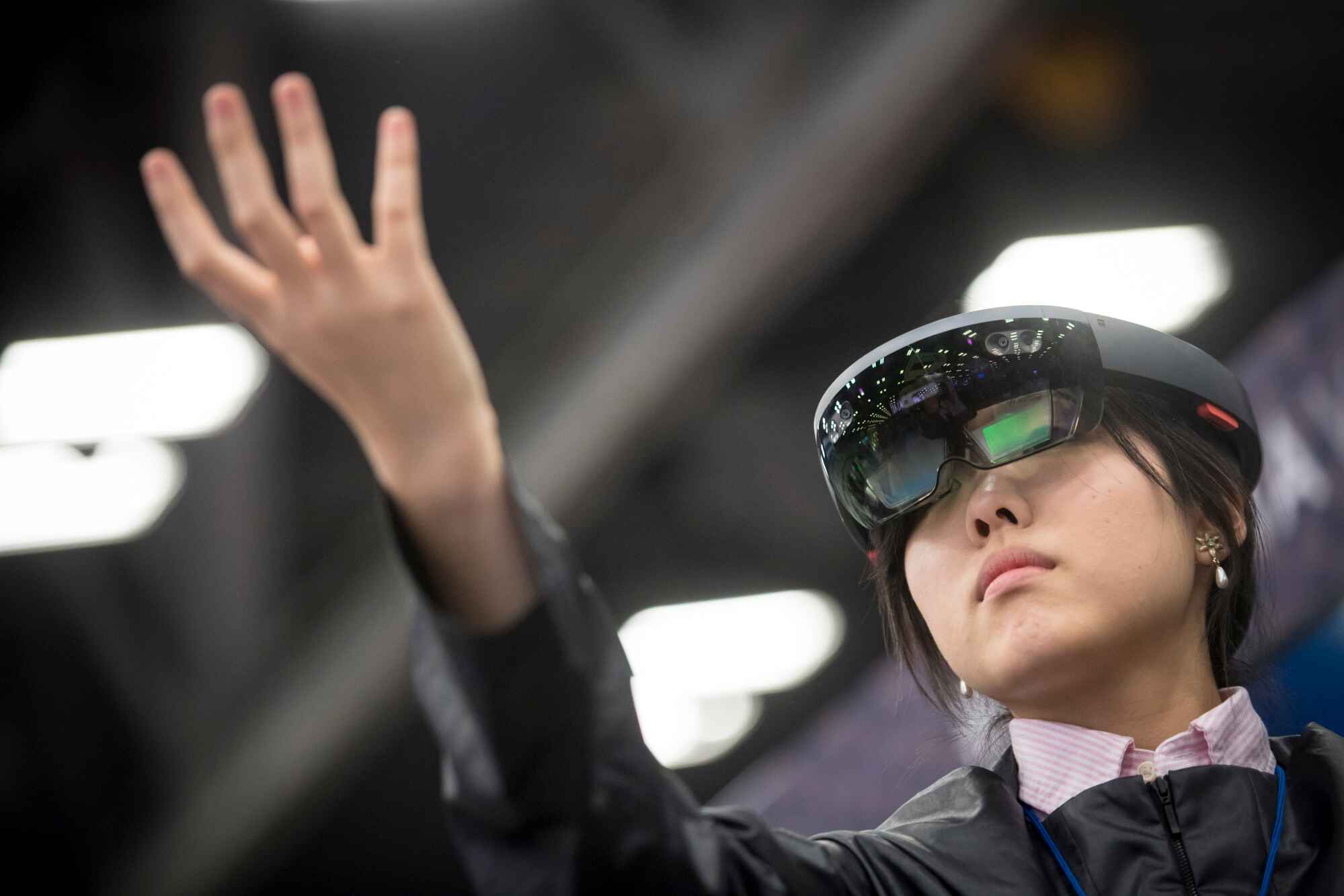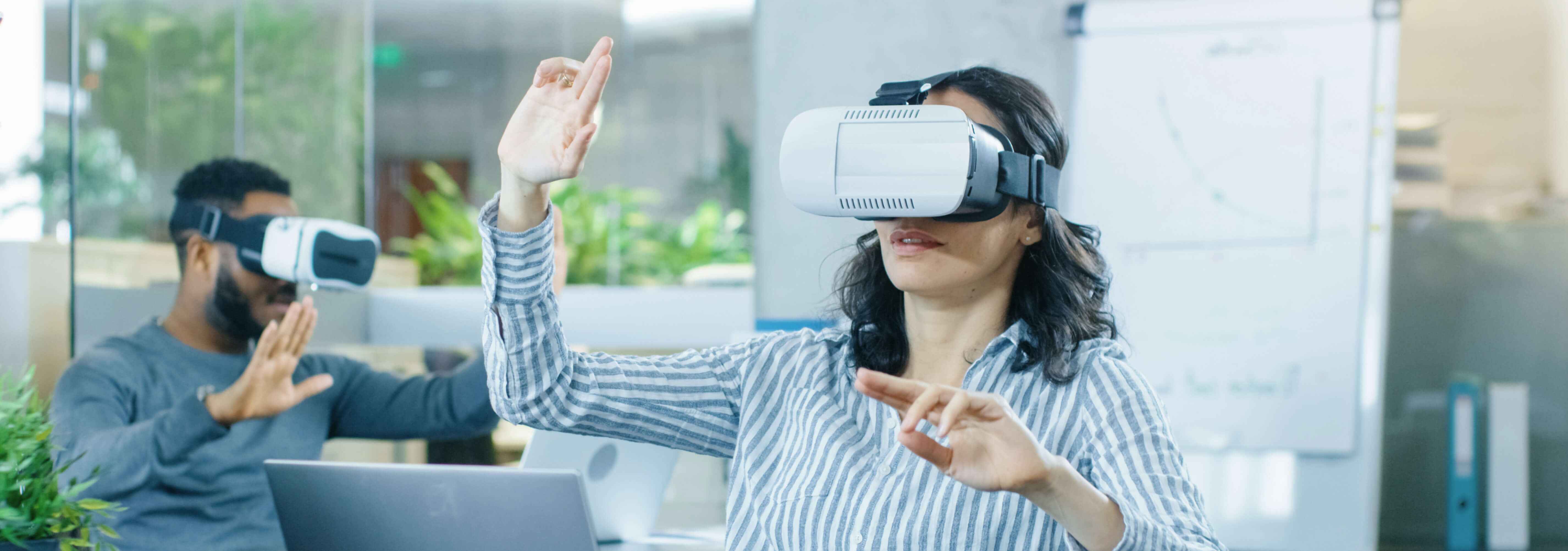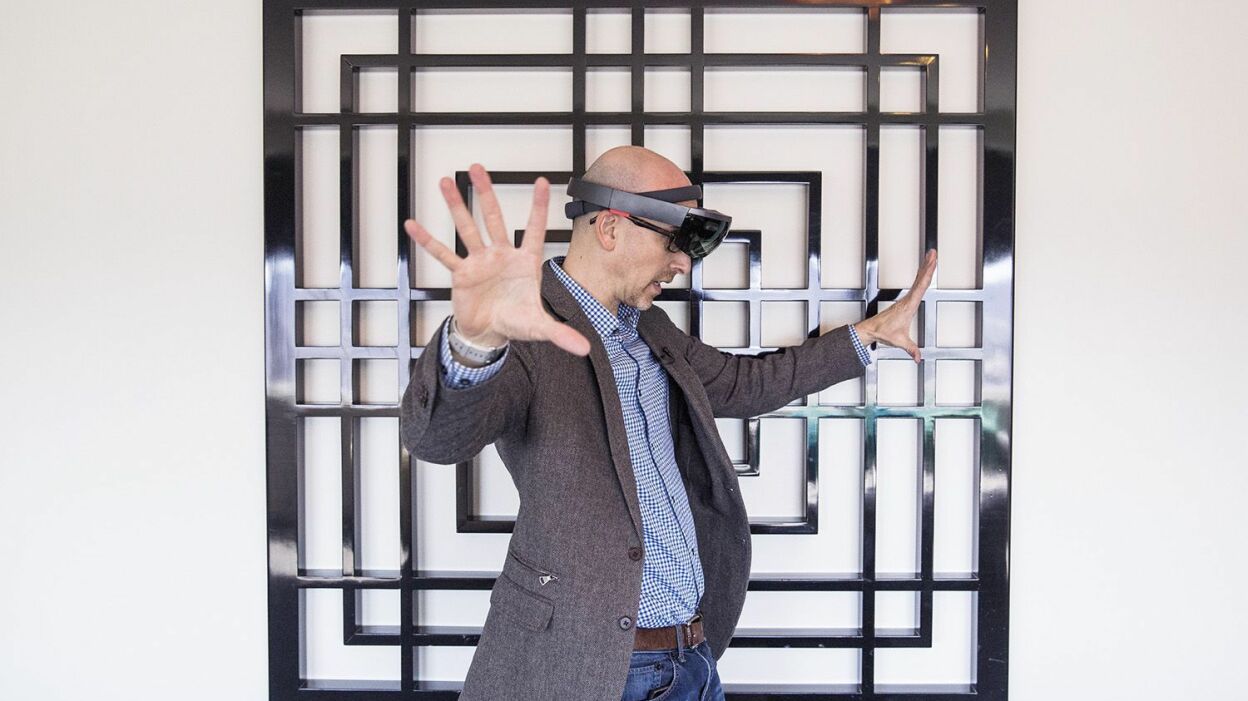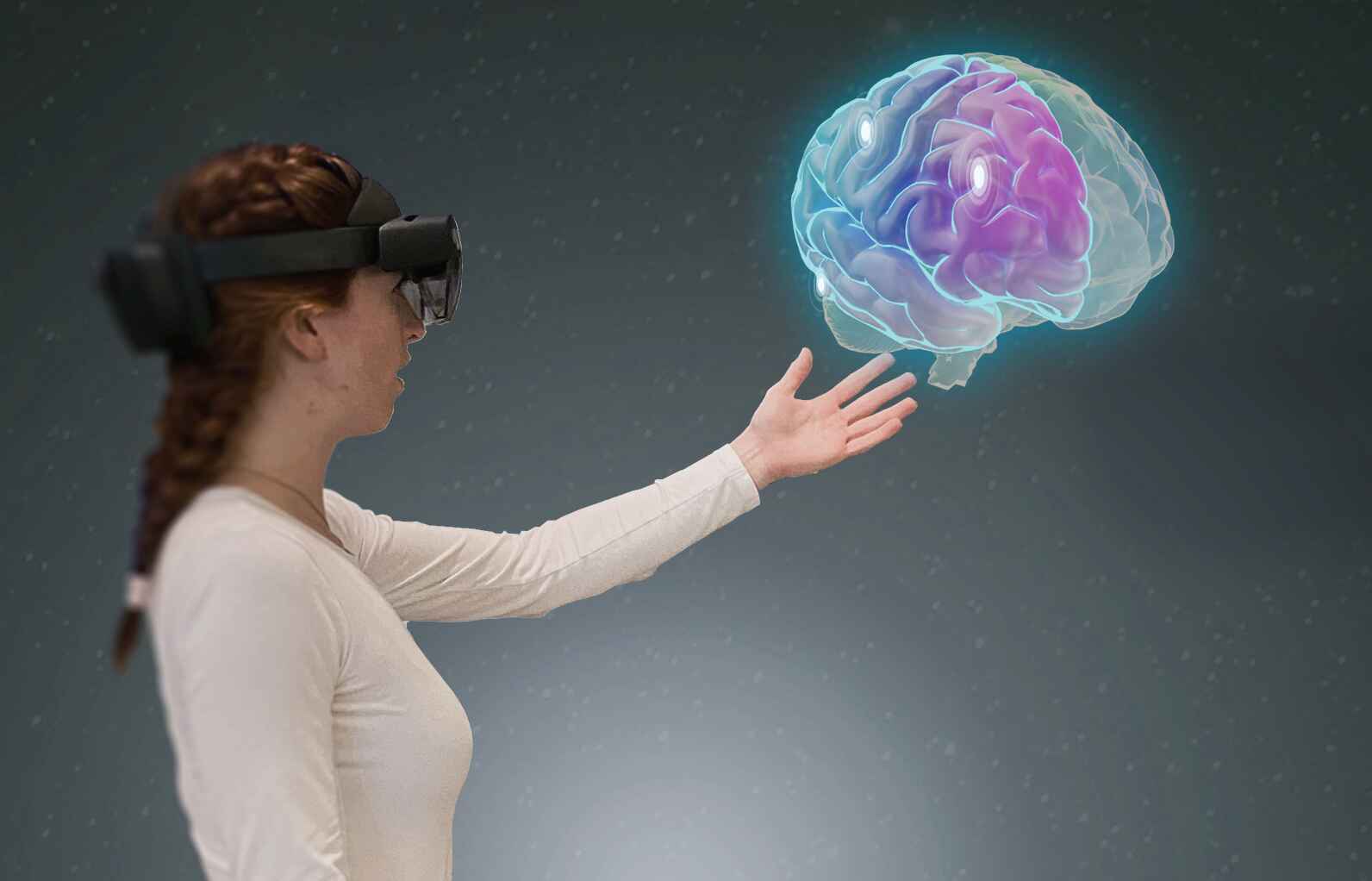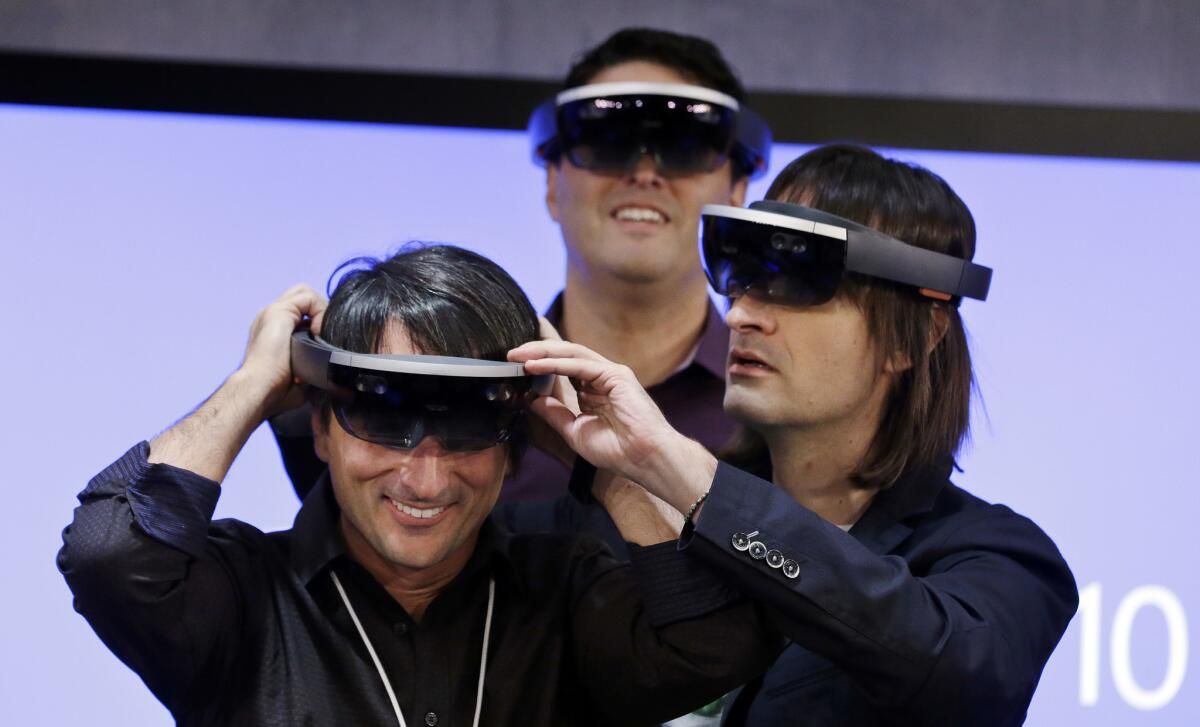Introduction
The HoloLens, developed by Microsoft, is a revolutionary mixed reality headset that blends the physical world with virtual elements. Since its introduction in 2016, it has captured the imagination of both technology enthusiasts and professionals in various industries. With its ability to overlay holograms onto the real world, the HoloLens opens up a realm of possibilities for gaming, education, healthcare, and many other sectors.
Initially, the HoloLens was only available to developers through the HoloLens Development Edition. This gave developers the opportunity to explore and create innovative applications for the device. The goal was to gather feedback and improve the technology before releasing it to the wider market.
After the success of the Development Edition, Microsoft launched the HoloLens Commercial Suite. This version provided additional features and support tailored specifically for businesses. It allowed organizations to integrate the HoloLens into their workflows and harness its potential for collaboration, visualization, and training.
In 2019, Microsoft unveiled the highly anticipated HoloLens 2. This updated version offered significant improvements over its predecessor, including a larger field of view, enhanced gesture recognition, and a more comfortable fit. The HoloLens 2 aimed to address the limitations of the original device and further refine the mixed reality experience.
Alongside the HoloLens, Microsoft also introduced the concept of Windows Mixed Reality. This platform allows users to experience mixed reality applications on a range of compatible devices, such as VR headsets and augmented reality glasses. It provides a unified ecosystem for developers and users alike, expanding the potential of mixed reality beyond the HoloLens itself.
The HoloLens has found applications in various fields, particularly in education and business. In education, the device offers immersive learning experiences, allowing students to interact with virtual objects and scenarios. It fosters engagement, creativity, and problem-solving skills, making learning more dynamic and effective.
In the business sector, the HoloLens has proven to be a valuable tool for training, design, and collaboration. Companies can create virtual prototypes, visualize data in 3D, and conduct remote meetings with holographic projectors. These applications streamline workflows, improve productivity, and open up new possibilities for innovation.
HoloLens Development Edition
The HoloLens Development Edition was the first version of the HoloLens made available to developers for exploration and experimentation. It was released in 2016 to foster innovation and gather feedback from the developer community. This edition provided developers with the tools and resources they needed to create groundbreaking mixed reality applications.
With the HoloLens Development Edition, developers gained access to the powerful capabilities of the device, including the ability to overlay holographic objects onto the real world. They could create immersive experiences and explore new possibilities for gaming, entertainment, education, and more.
Microsoft offered a robust set of development tools and documentation to guide developers in harnessing the potential of the HoloLens. This included the HoloLens SDK (Software Development Kit) and Unity, a popular game engine that enabled developers to build compelling mixed reality experiences.
Developers had the opportunity to experiment with spatial mapping, gesture recognition, voice commands, and gaze tracking in order to create intuitive and immersive interactions. They could also utilize the holographic processing unit (HPU) to handle complex computations and deliver seamless performance.
The HoloLens Development Edition was not only a platform for software development but also for hardware exploration. Developers had the chance to understand the inner workings of the HoloLens and provide valuable feedback to Microsoft, which helped refine and improve the device for future iterations.
Through the HoloLens Development Edition, developers pushed the boundaries of mixed reality and demonstrated the potential of the technology across various industries. They created applications for gaming, 3D modeling, medical training, architectural visualization, and more.
Microsoft actively encouraged collaboration within the developer community through events, forums, and partnerships. This fostered knowledge sharing and allowed developers to learn from each other’s experiences, ultimately advancing the development of mixed reality applications.
The HoloLens Development Edition was a pivotal step in the journey of the HoloLens, shaping its evolution and paving the way for its commercial versions. It provided developers with the necessary tools and support to unlock the full potential of the device, driving innovation and setting the stage for a future where mixed reality becomes an integral part of our everyday lives.
HoloLens Commercial Suite
The HoloLens Commercial Suite was introduced by Microsoft as a dedicated version of the HoloLens tailored specifically for businesses. It provided additional features and services to meet the unique needs of organizations across various industries, spanning from manufacturing and construction to healthcare and retail.
With the HoloLens Commercial Suite, businesses gained access to enterprise-level capabilities that enabled them to fully integrate the HoloLens into their workflows. This included robust security features, such as BitLocker encryption and secure boot, ensuring the protection of sensitive data and intellectual property.
Additionally, the Commercial Suite allowed for device management and remote assistance through Microsoft’s Mobile Device Management (MDM) and Azure Active Directory (AAD). This streamlined the deployment and maintenance of multiple HoloLens devices within an organization, making it easier to manage software updates and configurations.
One of the key advantages of the HoloLens Commercial Suite was its support for hands-free operation. The suite included a built-in camera that offered a first-person view, allowing users to share their perspective and collaborate effectively. This feature was particularly valuable in industries such as remote assistance, where experts could guide field technicians through complex tasks in real-time.
The suite also provided access to the Windows Store for Business, enabling organizations to distribute and manage their own custom applications internally. This facilitated the development of industry-specific solutions, tailored to the unique needs of individual businesses.
Furthermore, Microsoft offered a comprehensive set of resources and support to assist businesses in creating and implementing HoloLens solutions. This included access to a dedicated support team, documentation, and best practices guides, empowering organizations to fully leverage the capabilities of mixed reality in their operations.
Many businesses quickly recognized the potential of the HoloLens Commercial Suite and embraced the device as a tool for collaboration, visualization, and training. For example, architects and designers leveraged the HoloLens to view and modify virtual 3D models, allowing them to visualize and iterate on designs in real-world contexts.
In healthcare, the HoloLens enabled surgeons to overlay medical images, such as CT scans, directly onto a patient’s body, providing a more accurate and intuitive visualization. The device was also utilized for training medical professionals, simulating complex procedures and scenarios in a realistic and immersive manner.
The HoloLens Commercial Suite opened up a plethora of opportunities for businesses to transform their operations and drive innovation through mixed reality. With its enterprise-focused features and robust support, the suite empowered organizations to harness the power of the HoloLens and revolutionize their industries.
HoloLens 2
HoloLens 2, the highly anticipated successor to the original HoloLens, was unveiled by Microsoft in 2019. It brought significant advancements and improvements to the mixed reality experience, addressing many of the limitations of its predecessor.
One of the most notable improvements of the HoloLens 2 was the expanded field of view. Users now had a larger area in which holograms could be seamlessly overlaid onto the real world, resulting in a more immersive and realistic mixed reality experience.
The device also introduced a more comfortable and ergonomic design. HoloLens 2 featured a lighter and more balanced construction, reducing strain on the wearer’s head and offering a more comfortable fit. The improved fit allowed users to wear the device for longer periods without experiencing discomfort.
A significant enhancement in the HoloLens 2 was the enhanced gesture recognition. Users could now interact with holograms using more natural hand movements and gestures, making the experience more intuitive and immersive. This improvement further enhanced the usability and accessibility of the device.
In addition to gesture recognition, HoloLens 2 featured eye-tracking technology. This allowed for more precise interaction and control, enabling users to engage with holograms simply by looking at them. The eye-tracking feature added a new level of convenience and efficiency to the mixed reality experience.
Another notable upgrade was the integration of the Azure cloud platform. HoloLens 2 leveraged the power of the cloud to enhance its capabilities, enabling more complex and computationally intensive applications. This integration opened up new possibilities for developers, allowing them to create even more immersive and responsive mixed reality experiences.
HoloLens 2 also introduced improved voice recognition and speech commands. Users could now navigate and interact with holograms using their voice, making the experience more seamless and hands-free. This was particularly beneficial in situations where users needed to keep their hands free while still interacting with virtual objects.
Microsoft focused on addressing feedback from various industries in the development of HoloLens 2. The device was designed with enterprise applications in mind, offering features such as remote assistance and Windows Autopilot for quick and easy deployment.
HoloLens 2 demonstrated Microsoft’s commitment to advancing the mixed reality technology and expanding its applications. The improvements in comfort, usability, and capabilities solidified the device’s position as a leading tool for innovation in fields such as manufacturing, design, healthcare, and more.
Overall, HoloLens 2 marked a significant leap forward in mixed reality technology, delivering an enhanced experience that pushed the boundaries of what was previously possible. With its improved features and capabilities, HoloLens 2 opened up a world of possibilities for industries and individuals alike.
Windows Mixed Reality
Windows Mixed Reality is a platform introduced by Microsoft that extends the capabilities of mixed reality beyond the HoloLens. It provides a unified ecosystem for developers and users to explore and experience mixed reality applications on a variety of compatible devices, including virtual reality (VR) headsets and augmented reality (AR) glasses.
The Windows Mixed Reality platform combines elements of virtual reality and augmented reality, allowing users to interact with virtual objects and environments while still being aware of the real world. This blend of virtual and real elements creates an immersive and captivating experience.
Windows Mixed Reality supports a wide range of VR headsets from various manufacturers, offering users a diverse selection to choose from. These headsets provide high-resolution displays, built-in tracking technology, and motion controllers, enabling users to fully immerse themselves in virtual environments and interact with digital content.
In addition to VR headsets, Windows Mixed Reality also extends to AR glasses. These lightweight and portable devices overlay holographic images onto the real world, enhancing the user’s perception and interaction with their surroundings. This technology has applications across industries, including retail, healthcare, and entertainment.
Developers have access to a comprehensive set of tools and resources through the Windows Mixed Reality platform. They can use platforms such as Unity or Unreal Engine to create immersive experiences and applications that take advantage of the unique features of each device.
Windows Mixed Reality also benefits from the integration of the Microsoft Store, where users can browse and download a wide variety of mixed reality applications and content. This centralized platform ensures a seamless and convenient experience for users to discover and access diverse mixed reality experiences.
The platform also supports input methods such as voice commands, hand gestures, and spatial mapping. This allows for intuitive and natural interactions with virtual objects and environments, enhancing the sense of presence and immersion within the mixed reality space.
Windows Mixed Reality has opened up possibilities for various industries, including gaming, education, design, and healthcare. In gaming, the platform offers immersive and interactive experiences with highly detailed virtual worlds and engaging gameplay. In education, it provides innovative ways to learn and explore complex concepts through visualizations and simulations.
Furthermore, Windows Mixed Reality has been utilized in the field of design, allowing architects and engineers to visualize and manipulate 3D models in a more intuitive and immersive manner. In healthcare, it has been used for patient education, medical training, and even assisting surgeons during complex procedures.
Windows Mixed Reality has expanded the horizons of mixed reality technology, making it more accessible and pervasive. By providing a unified platform for a wide range of devices, it has allowed users to explore new realms of virtual and augmented experiences, blurring the lines between the real and the digital.
HoloLens in Education
The HoloLens has found significant application in the field of education, offering new and immersive ways of learning. By combining virtual elements with the real world, the HoloLens provides students with interactive and engaging experiences that enhance their understanding and retention of complex concepts.
One of the key advantages of using the HoloLens in education is its ability to create immersive simulations and visualizations. For example, students studying biology can explore virtual 3D models of the human body, allowing them to examine organs and systems in a detailed and interactive way. This hands-on experience brings anatomy to life, making it more engaging and memorable.
The HoloLens also enables students to experience historical events and cultural landmarks in a whole new dimension. With augmented reality, they can witness moments from history, explore ancient ruins, or visit museums virtually. This immersive approach to learning stimulates curiosity and fosters a deeper understanding of the past and different cultures.
In fields where hands-on training is critical, such as engineering or medical professions, the HoloLens provides invaluable opportunities. Students can practice complex procedures or operate virtual equipment in a safe and controlled environment. This allows for repetitive practice without the risk of mistakes, ensuring better preparedness and mastery of essential skills.
Collaborative learning is another area where the HoloLens excels. Multiple students wearing HoloLens devices can share the same virtual space and interact with shared holographic objects. This promotes teamwork and active participation, as students can discuss and collaborate on projects or solve problems together. The HoloLens encourages student engagement and communication, fostering a collaborative learning environment.
The HoloLens also has the potential to cater to students with different learning styles and abilities. Visual learners benefit from the immersive and interactive content, while auditory learners can benefit from voice commands and audio feedback. Moreover, students with special needs can use the HoloLens to access customized content and accommodations, ensuring inclusivity and equal opportunities for all learners.
Teachers can leverage the HoloLens to create personalized and adaptive learning experiences for their students. They can use the device to design interactive lessons, create virtual field trips, and incorporate gamified elements into the curriculum. This flexibility allows educators to tailor the learning process to individual students’ needs, making learning more engaging and effective.
Overall, the HoloLens has the potential to revolutionize education by transforming traditional classrooms into interactive and immersive learning environments. It allows students to explore, experiment, and engage with content in captivating ways that enhance their understanding and enthusiasm for learning. As the technology continues to evolve, the HoloLens will likely play an increasingly prominent role in shaping the future of education.
HoloLens in Business
The HoloLens has proven to be a valuable tool for businesses across various industries, offering new ways to improve productivity, streamline workflows, and drive innovation. With its ability to overlay holograms onto the real world, the HoloLens provides unique opportunities for visualization, collaboration, and training.
One of the key applications of the HoloLens in business is in the field of design and prototyping. Architects, engineers, and product designers can utilize the device to create and interact with virtual prototypes, allowing for real-time visualization and modification. This enables teams to identify design issues early on and make informed decisions, resulting in more efficient and cost-effective design processes.
The HoloLens also offers enhanced collaboration capabilities for remote teams. With mixed reality conferencing, colleagues from different locations can come together virtually and interact with shared holographic objects. This fosters collaboration and communication, enabling teams to work together as if they were in the same room. By eliminating the need for travel, the HoloLens saves time and resources, making collaborations more efficient.
In the manufacturing industry, the HoloLens is utilized for training and assembly guidance. Workers can wear the HoloLens and receive step-by-step instructions overlaid onto the physical equipment or assembly process. This reduces errors and improves efficiency, as workers have real-time guidance while working on complex machinery or assembling intricate products.
Furthermore, the HoloLens has applications in remote assistance, where experts can guide field technicians through complex procedures using live video feeds and shared holographic annotations. This not only improves efficiency and reduces downtime but also provides an avenue for knowledge transfer and skill development.
The device also proves to be useful in data visualization and analytics. With the HoloLens, users can overlay data visualizations onto their physical environments, allowing for a more intuitive and immersive understanding of complex datasets. This enables businesses to gain valuable insights and make data-driven decisions more effectively.
HoloLens has found adoption in industries such as healthcare, retail, and manufacturing, where it is utilized for a range of applications. In healthcare, for instance, surgeons can use the device for surgical planning, allowing them to visualize and simulate procedures in a more accurate and immersive manner. In the retail sector, businesses can leverage the HoloLens for interactive product demonstrations and virtual shopping experiences, enhancing customer engagement and driving sales.
The versatility and utility of the HoloLens make it a valuable tool for businesses looking to innovate and gain a competitive edge. It enables improved collaboration, visualization, and training, transforming the way industries operate. As the technology continues to advance, the potential applications of the HoloLens in business will undoubtedly expand, opening up new possibilities and driving further growth and innovation.
Possible Release Date for the Public
Since its initial release, the HoloLens has primarily been available to developers and businesses through the Development Edition and Commercial Suite. However, many individuals outside these groups are eagerly anticipating when the HoloLens will be available for public purchase.
Although Microsoft has not provided a specific release date for the public, there are several factors that can help us speculate on when it might happen. The company has consistently expressed its commitment to advancing mixed reality technology, and the success and positive reception of the HoloLens have underscored its potential as a consumer product.
Significant updates and improvements have been made to the HoloLens hardware and software, such as the release of HoloLens 2. These advancements suggest that Microsoft is continuously working towards refining and enhancing the device for a larger consumer market.
Another factor to consider is market readiness. The availability and adoption of other mixed reality devices, such as VR headsets and AR glasses, have been steadily increasing. This indicates a growing interest and demand for mixed reality experiences among the general public.
Microsoft’s strategy of introducing Windows Mixed Reality, which extends the capabilities of mixed reality beyond the HoloLens, also signals its intention to reach a wider audience. By supporting a range of compatible devices, Microsoft is paving the way for a more expansive mixed reality ecosystem that can cater to a broader consumer base.
Additionally, the success of similar consumer-focused technologies, such as virtual reality gaming, suggests that the market is receptive to immersive experiences. As mixed reality advances and becomes more accessible, the demand for consumer-grade devices like the HoloLens is likely to increase.
Considering these factors, it is reasonable to expect that Microsoft may release a consumer version of the HoloLens in the near future. However, the exact release date remains uncertain and will depend on various factors, including market readiness, technological advancements, and Microsoft’s strategic plans.
In the meantime, prospective consumers and enthusiasts can stay updated on Microsoft’s announcements and events, where the company frequently shares updates and insights on the progress of the HoloLens and its plans for future releases. As the technology continues to evolve and mature, the day when the HoloLens becomes available to the public draws closer, promising incredible possibilities and transformative experiences for consumers across the globe.
Conclusion
The HoloLens, developed by Microsoft, has revolutionized the way we interact with digital content by seamlessly blending the virtual and physical worlds. From its inception as the HoloLens Development Edition to the advancements of the HoloLens Commercial Suite and HoloLens 2, the device has proven to be a powerful tool for developers and businesses alike.
In the field of education, the HoloLens has opened up new opportunities for immersive and interactive learning experiences. Students can explore virtual models, visit historical sites, and collaborate with their peers in ways that were previously unimaginable. The device has the potential to transform traditional classrooms into dynamic and engaging learning environments.
Businesses across various industries have also recognized the value of the HoloLens. Its applications in design, collaboration, and training have streamlined workflows, enhanced productivity, and enabled innovative solutions. From architecture and manufacturing to healthcare and retail, the HoloLens has paved the way for digital transformation and facilitated new avenues of growth.
The HoloLens is not the only offering in the mixed reality space. Microsoft’s Windows Mixed Reality platform has expanded the accessibility and reach of mixed reality experiences beyond the HoloLens itself. With a wide range of compatible devices, developers and users can explore immersive virtual environments and augmented reality applications.
While the HoloLens has made significant strides in its development and adoption, the public release date for consumer availability remains uncertain. However, ongoing advancements in the technology and the growing demand for mixed reality experiences indicate that a broader release is on the horizon.
In conclusion, the HoloLens has demonstrated its potential to transform various industries and enhance the way we learn and work. While it has made an impact in the developer and business domains, the future holds even more exciting possibilities as mixed reality continues to evolve and reach a wider audience. As this technology becomes more accessible, it has the potential to reshape our everyday lives and redefine how we interact with digital content, opening new horizons for innovation and human creativity.







